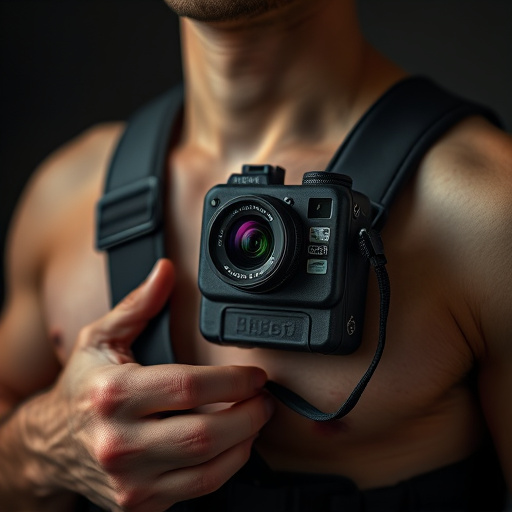Hidden personal body cameras, disguised as clothing or accessories, offer discreet security and anonymity for personal safety, evidence collection, or creative projects. Their compact design, advanced sensors, flashlight, motion-activation, and loop recording features provide comprehensive documentation in various settings. However, their use raises legal and ethical concerns, particularly regarding privacy breaches and societal trust; striking a balance between individual rights and safety is crucial for responsible deployment according to local laws and best practices.
Uncover the power of discretion with a hidden personal body camera—a confidential companion that captures moments in an unobtrusive way. This compact device offers peace of mind and enhanced safety, especially in uncertain situations. In this article, we explore the key features and benefits of these discreet cameras, delving into their legal considerations, ethical implications, and best practices for responsible use, including the addition of a flashlight for versatility.
Understanding Hidden Personal Body Cameras: A Confidential Companion
Hidden personal body cameras, also known as wearable surveillance devices, are small, discreet cameras attached to an individual’s clothing or accessories. These innovative tools offer a unique perspective by capturing firsthand videos and images from the wearer’s point of view. With advanced technology, these cameras can be easily concealed, making them an ideal choice for those seeking privacy and confidentiality.
Whether used for personal safety, evidence collection, or even creative projects, hidden personal body cameras provide a sense of security and anonymity. Their compact design allows users to wear them seamlessly throughout the day, capturing unexpected moments, interactions, or any activity that requires discreet observation. This technology empowers individuals to have control over their surroundings and ensures they have tangible records of their experiences.
Key Features and Benefits of a Discreet Body-Worn Camera
A hidden personal body camera, often equipped with a powerful flashlight, offers a range of key features and benefits that make it a valuable tool for various individuals. Its discreet design allows users to capture high-quality video and audio without drawing attention, making it ideal for security, surveillance, or personal documentation purposes. The built-in flashlight enhances visibility in low-light conditions, enabling clear recording even in dark environments.
These cameras are typically compact, lightweight, and easy to wear, ensuring comfort during extended use. They often feature advanced sensors, offering sharp video quality and crisp audio, essential for capturing detailed evidence. Additionally, many models include motion-activation and loop recording capabilities, optimizing storage space while ensuring no crucial moments go unnoticed. With these features in place, a hidden personal body camera becomes a versatile asset, providing peace of mind and comprehensive documentation in diverse settings.
Legal Considerations and Ethical Implications of Using Hidden Cameras
The use of hidden personal body cameras, especially those with flashlight functionality, raises significant legal and ethical questions. In many jurisdictions, the installation of surveillance devices without explicit consent is a breach of privacy laws, as individuals have a reasonable expectation of privacy in public spaces and even in private homes. While some regions permit the use of such devices for self-defense or personal documentation, strict guidelines and limitations apply. For instance, hidden cameras must not be used to invade someone’s privacy or record them without their knowledge in places where they have a legitimate expectation of privacy, like bathrooms or bedrooms.
Ethically, the discreet nature of these cameras blurs the line between public and private spaces, potentially leading to a culture of constant surveillance. This can have profound effects on societal trust, freedom, and personal autonomy. Furthermore, the potential for abusive use, such as stalking or harassment, is a serious concern. As technology advances, it’s crucial to strike a balance between individual rights and safety while ensuring that the use of hidden personal body cameras remains within ethical boundaries defined by law and societal norms.
Best Practices for Safe and Effective Use of Personal Body Cameras with Flashlight
When utilizing a hidden personal body camera with flashlight, adhering to best practices ensures both safety and effectiveness. Firstly, familiarize yourself with local laws and regulations regarding the use of body-worn cameras to ensure compliance and avoid any legal repercussions. Secondly, maintain open communication during its use; inform others present about the recording to foster transparency and build trust.
Positioning and activation are crucial. Ensure the camera is securely attached and discreetly placed for optimal visibility without drawing undue attention. Activate the device only when necessary, conserving battery life and preserving footage for relevant incidents. Regularly review and secure stored recordings to maintain privacy and prevent unauthorized access.
